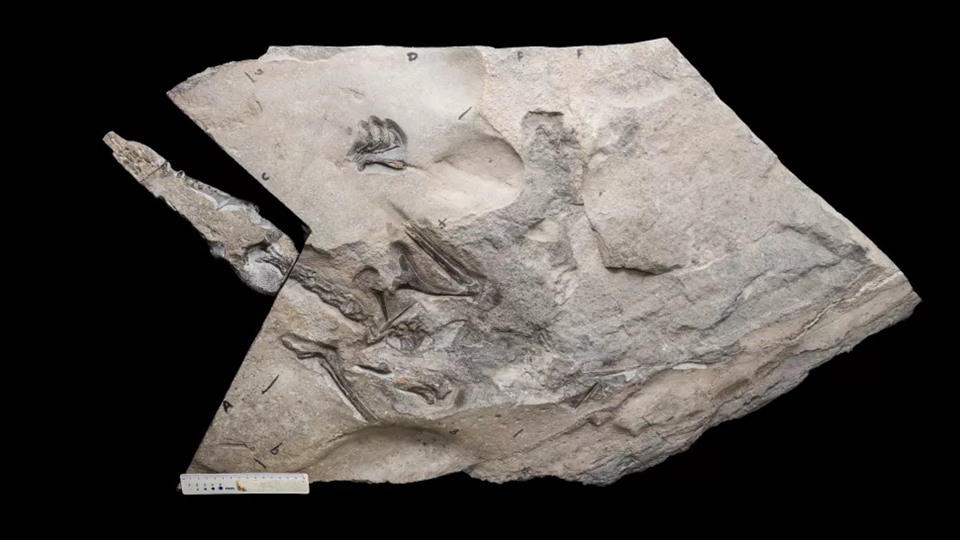During low tide on the island of Skye (Scotland), a dinosaur fossil hunter peered down the coastal rocks and discovered a whole “treasure”: the remains of a large pterosaur. most recorded since the Jurassic period.

Largest Jurassic Pterosaur Fossil Unearthed in Scotland
Illustration Dearc sgiathanach flying in the Jurassic sky of what is now Scotland. Photo: Natalia Jagielska/Scottish Archeology
Since collecting the specimen in 2017, scientists have studied its anatomy and identified it as a previously unknown species. They gave the new species the Scottish Gaelic name Dearc sgiathanach (jark ski-an-ach) – meaning double “winged reptile” and “reptile from Skye”.

Scientists with the stone slab containing the fossil. Photo: Scots Archeology
Scientists with the stone slab containing the fossil. Photo: Scottish Archeology/Steve Brusatte
The team said the Dearc sgiathanach was found to have a wingspan of more than 2.5 meters, a large size for pterosaurs dating from the Jurassic period (201.3 million to 145 million years ago).

Pterosaurs are the first known vertebrates to have evolved powered flight – a feat they achieved some 50 million years before birds did.

The Jurassic dinosaur Dearc sgiathanach had long wings and a long tail.(Image credit: Gregory Funston)
The Jurassic Pterosaur Dearc sgiathanach had long wings and a long tail. Photo: Gregory Funston/Scottish Archeology
Fossil of Dearc sgiathanach.(Image credit: Gregory Funston)
Fossil of Dearc sgiathanach. Photo: Gregory Funston/Scottish Archeology
The oldest recorded pterosaurs date to about 230 million years ago, during the Triassic period. It was previously thought that they did not reach their giant size until the late Jurassic or Cretaceous (145 million to 66 million years ago).

To fly, pterosaurs need light and fragile bones. This feature also makes their bones rarely well fossilized.
According to the results of bone analysis, the Dearc sgiathanach in Scotland is not fully developed. It is therefore likely that an adult Dearc sgiathanach will have an even longer wingspan, the researchers said. Furthermore, a computed tomography (CT) scan shows that Dearc sgiathanach has a large visual lobe, which means it has good eyesight.





